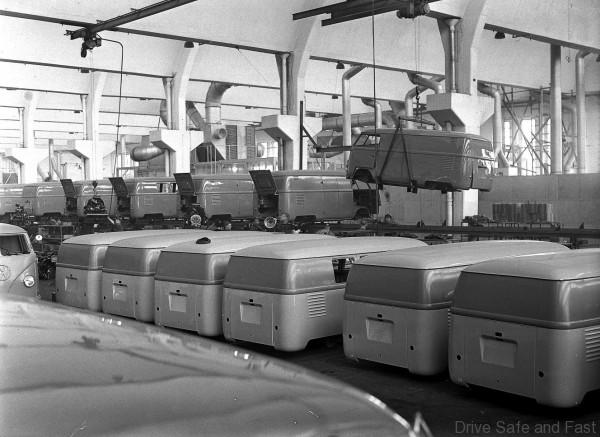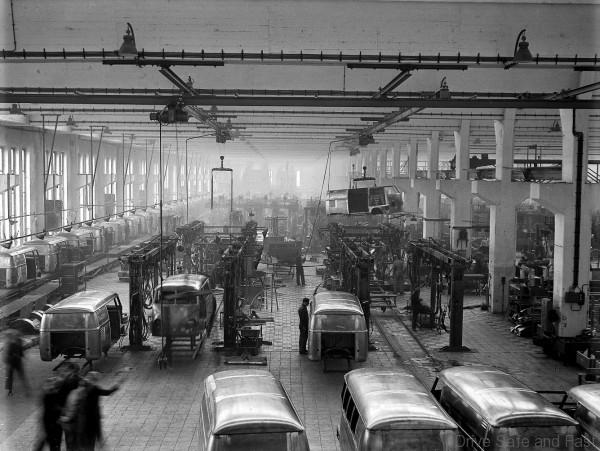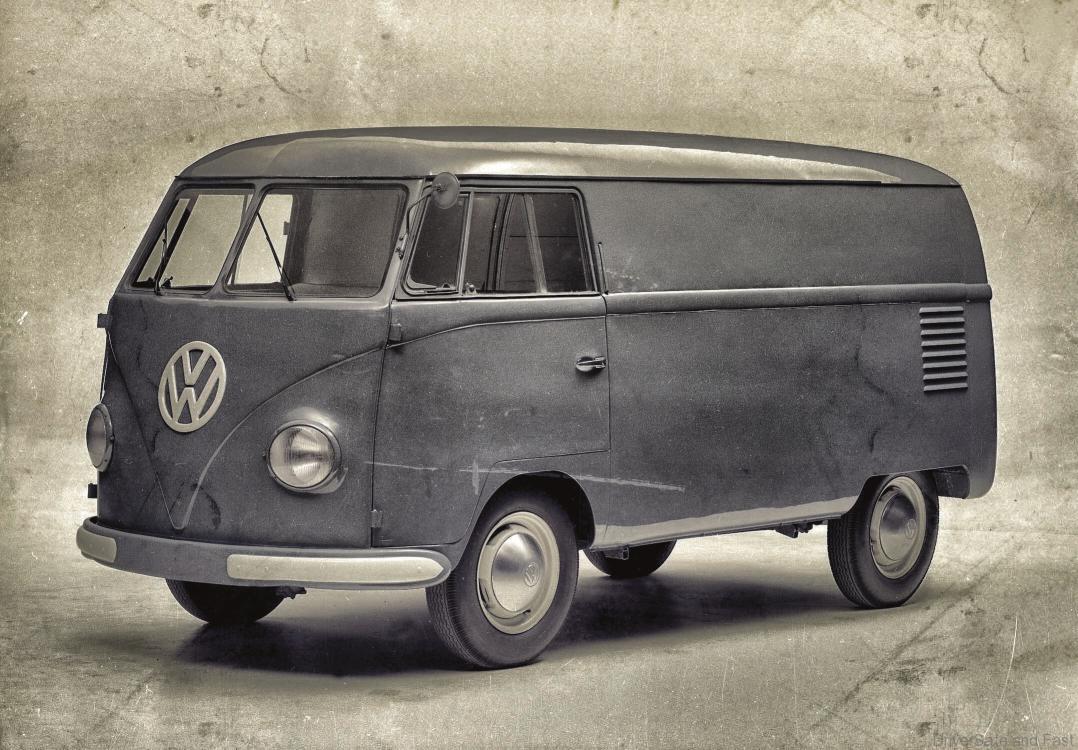Some people retire at the age of 65, but this one is just getting started! Production of the first Volkswagen Transporter began 65 years ago and the ‘Bulli’ is still going strong today. The first models were built in Wolfsburg before production started at a new facility in Hanover in 1956.
This date also marks the beginning of a unique automotive love story: today, the entire model series has attained cult status. Whether hippy or tradesman – everyone is driving Transporter.

It all began in 1947 with a pencil sketch: the Dutch car importer Ben Pon saw a simple flat-bed vehicle at the Volkswagen plant and, taking it as a basic idea, he sketched the outlines of a Transporter with Beetle DNA in his notebook.
Designers used the engine and axles of the Beetle. Instead of a central tubular frame of the popular family car, the bus had a unitized body that was mounted on a ladder frame. The 1.1-litre engine produced 18kW at 3300 rpm. The bus could transport up to eight people and the two rear seat rows could be removed easily to free up load space for around 750 kg of payload.
Production began on 8 March 1950, in Hall 1 of the Volkswagen plant in Wolfsburg, and ten vehicles were manufactured per day.
By the end of 1950, 8001 Transporters had already been built. Demand was enormous, especially since its affordable price made it an attractive option to tradesmen and retail businesses. The unique vehicle quickly became an export hit as well. Volkswagen buses could simply transport anything and everything: rubble and debris, mortar and building stones, breakfast rolls and bees wax, cigars and newspapers.
A Volkswagen bus with a camping box made its appearance in 1951 at the automobile exhibition in Berlin. The delivery van with a rear engine suddenly held the promise of an entirely different type of travel. For the first time, it travelled over the Alps. Later, it was driven to India when hippies discovered the ‘Bulli’ for themselves.
Four years after its production launch, the 100,000th Volkswagen Transporter came off the assembly line in Wolfsburg in 1954. By this point, there were 30 different models of the vehicle. Daily production in Wolfsburg was at 80 vehicles but it couldn’t produce more because the plant was already filled to capacity with Beetle production. It became clear that the Transporter needed its own plant.
Construction work began in early March 1955 in Hannover-Stöcken, and the plant was built from the ground up in just one year. In March 1956, the first “Made in Stöcken” Transporters come off the assembly line. This was the beginning of a future symbol of the ‘economic wonder years’. Today, a total of 11 million T-series vehicles spanning five generations have been produced worldwide.
Production of the new generation model, the T6, launches this year. Along with the T-series, the Hannover-Stöcken plant also produces the Amarok pick up. The successful California recreational vehicle is built not far away in Limmer. Around 12,200 people are employed at the Hannover business site of Volkswagen Commercial Vehicles.

The Poznan plant in Poland (5,700 employees) produces the Transporter and the Caddy, and another plant is being built in nearby, Wrzesnia for the new Crafter. Today, a total of around 19,500 employees work for the Volkswagen Commercial Vehicles brand.


